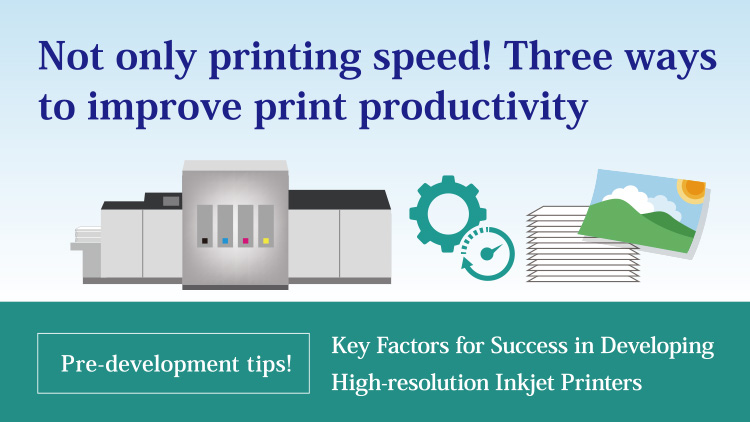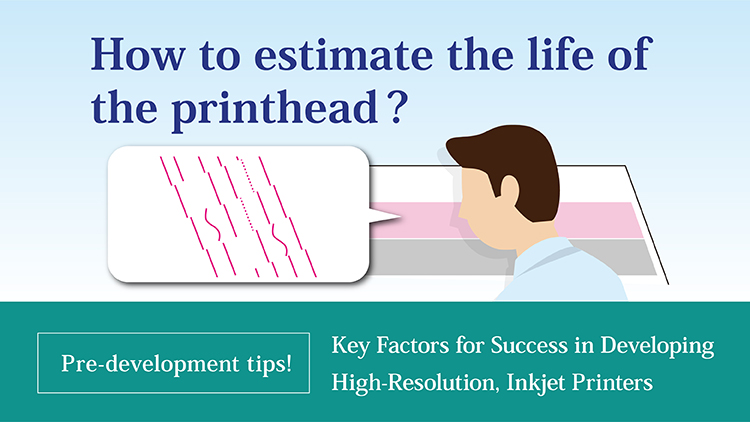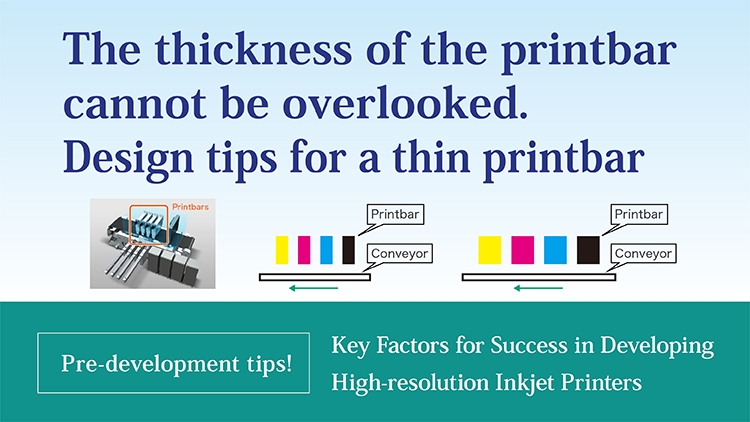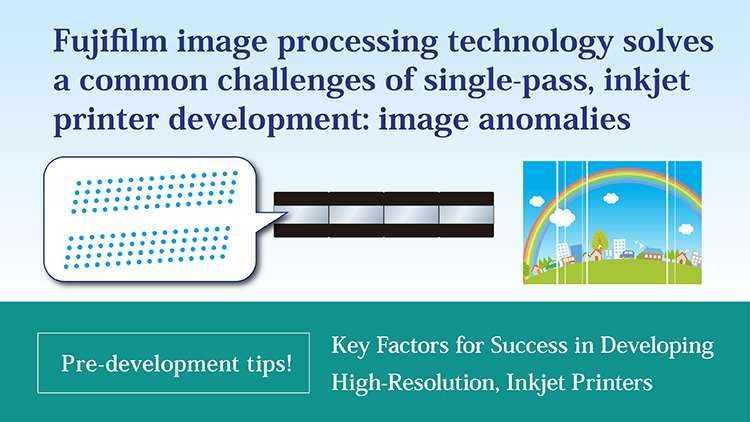
Challenge: Addressing image anomalies in high-resolutions single-pass systems
Fujifilm has years of experience in high-resolution inkjet printer development based on its commercialization of single-pass printers. With this experience, Fujifilm has developed a keen understanding of best practices for successful implementation.
During printing, many factors affect each ink drop’s characteristics and the motion of the drop during jetting. When compared with single-pass systems, printhead shuttling inkjet printers typically use a smaller number of nozzles. If a nozzle experiences a problem, visible image anomalies are not readily apparent due to the jetting redundancy, which occurs as the printhead shuttles back and forth, overlapping a portion of previously printed area. With high-resolution, single-pass inkjet printers, the printhead is stationary and contains tens of thousands of nozzles. If any single nozzle has difficulty, it is likely that it may produce an image anomaly that impacts image quality.
This article shares three best practices for optimizing image quality:
- Nozzle cleaning
- Straight droplet jetting using image inspection techniques
- Image compensation that prevents image anomalies and allows consistent output
The importance of printhead cleaning on output quality
Typical for any inkjet printing system and part of routine care and maintenance is printhead cleaning. This is a delicate process that can be performed manually, partially automatically, or fully automatically depending on the type of printing solution. Printhead cleaning can help to eliminate image anomalies if performed based on the manufacturer's recommended procedure. In many advanced systems, this process is automated and conducted while printheads move to their home or capping position. There are a range of cleaning methods, from non-woven wet fabric to a squeegee that wipes the printhead clean. In certain cases, a manual intervention by an operator may be required. While cleaning is important, for high-resolution single-pass configured printheads cleaning may eliminate all print anomalies as not all anomalies may be related to the cleanliness of the printhead.
To understand why, consider the low-resolution printers where one nozzle in a printhead fails at a frequency of once every 100,000 actuations (failure rate P = 1/100,000). If automatic nozzle cleaning is applied to 1,000 nozzles, the probability of successfully cleaning all nozzles and eliminating image anomalies is about 99%, as expressed below:
| (1−P)1000≈99.0% |
However, if the printer is a single-pass machine using high-resolution printheads, it may have 100,000 nozzles. Now the probability of successfully cleaning all nozzles is less than 37%, as expressed below:
| (1−P)100000≈36.8% |
This means that reaching the same cleaning efficiency of a scanning printer in a printer using single-pass technology must be improved by a factor of 100! (Fig. 1)
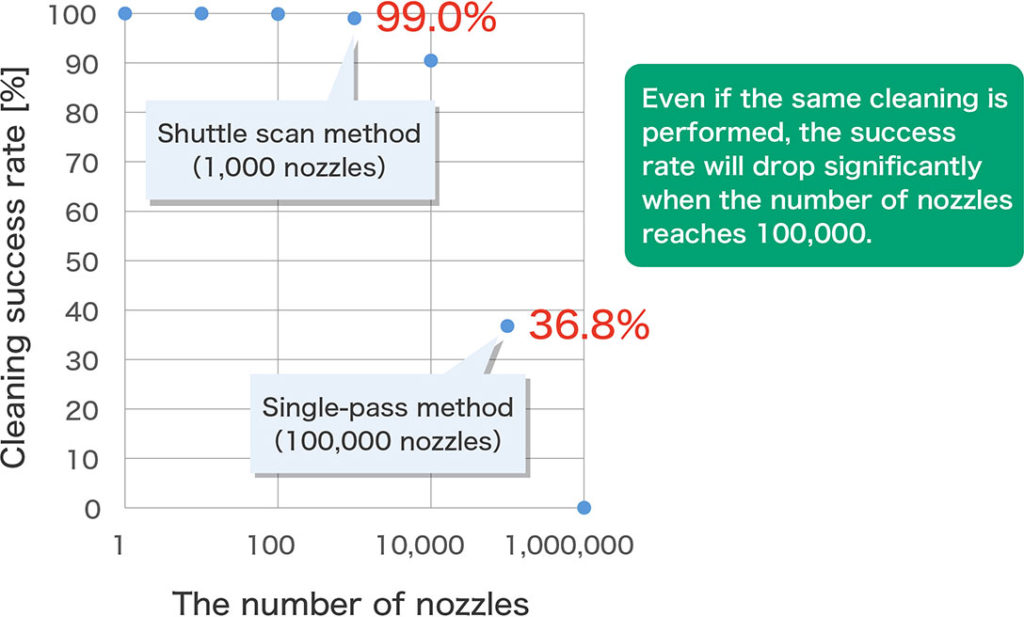
As noted above, when developing high-resolution, single-pass printers, close attention must be taken to every external factor, no matter how small, as they can influence local nozzle performance and impact image quality. Printhead cleaning is the first line of defense. We will examine cleaning further in a future article, but another path to eliminating image anomalies in high resolution, single-pass printer implementations is to use advanced image processing technology that includes detection and dynamic compensation. These additional advanced technologies can also help to avoid and mitigate factors that influence nozzle performance. These are further detailed below.



